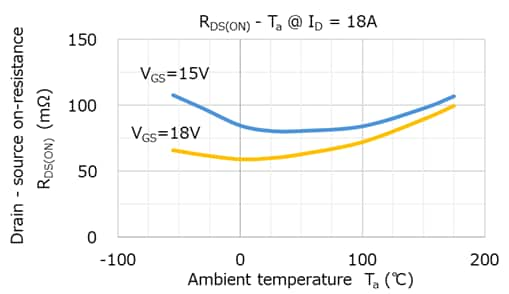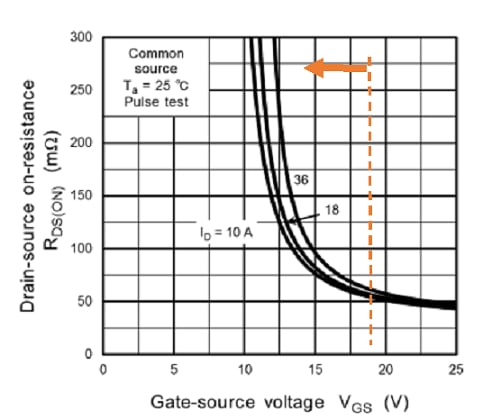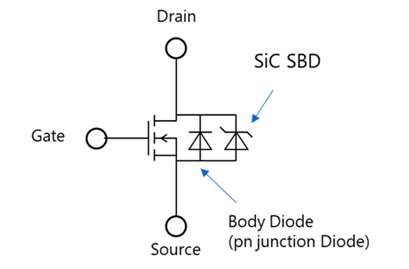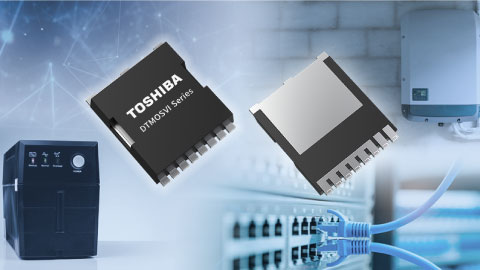- General Top
- SEMICONDUCTOR
- STORAGE
- COMPANY
-
My ToshibaSemicon
- Semiconductor Top
-
ApplicationsAutomotive
Body Electronics
xEV
In-Vehicle Infotainment
Advanced Driver-Assistance Systems (ADAS)
Chassis
IndustrialInfrastructure
BEMS/HEMS
Factory Automation
Commercial Equipment
Consumer/PersonalIoT Equipment
Healthcare
Wearable Device
Mobile
Computer Peripherals
-
ProductsAutomotive Devices
Discrete Semiconductor
Diodes
Transistors
Logic ICs
Analog Devices
Digital Devices
Wireless Devices
※
: Products list (parametric search)
Power SemiconductorsSiC Power Devices
※
: Products list (parametric search)
Isolators/Solid State RelaysPhotocouplers
Digital Isolators
Solid State Relays
Fiber Optic Transmitting Modules
※
: Products list (parametric search)
MOSFETsIGBTs/IEGTsBipolar Transistors※
: Products list (parametric search)
Diodes※
: Products list (parametric search)
MicrocontrollersMotor Driver ICsIntelligent Power ICs※
: Products list (parametric search)
Power Management ICsLinear ICs※
: Products list (parametric search)
General Purpose Logic ICsLinear Image SensorsOther Product ICsOther Product ICs
※
: Products list (parametric search)
-
Design & Development
-
Knowledge
- Where To Buy
- Part Number & Keyword Search
- Cross Reference Search
- Parametric Search
- Stock Check & Purchase
This webpage doesn't work with Internet Explorer. Please use the latest version of Google Chrome, Microsoft Edge, Mozilla Firefox or Safari.
require 3 characters or more. Search for multiple part numbers fromhere.
The information presented in this cross reference is based on TOSHIBA's selection criteria and should be treated as a suggestion only. Please carefully review the latest versions of all relevant information on the TOSHIBA products, including without limitation data sheets and validate all operating parameters of the TOSHIBA products to ensure that the suggested TOSHIBA products are truly compatible with your design and application.Please note that this cross reference is based on TOSHIBA's estimate of compatibility with other manufacturers' products, based on other manufacturers' published data, at the time the data was collected.TOSHIBA is not responsible for any incorrect or incomplete information. Information is subject to change at any time without notice.
require 3 characters or more.
Can SiC MOSFET be connected in parallel and used?
SiC MOSFET can be connected in parallel and used as well as Si MOSFET.
For precautions on the parallel connection of MOSFETs, refer to MOSFET Application Notes: “Parasitic Oscillation (Power MOSFET Paralleling)" on the Website of Toshiba Electronic Devices & Storage Corporation.
In the case of SiC MOSFET, there are three points to be further noted.
1. Care must be taken because the on-resistance (RDS(ON)) of SiC MOSFET is sensitive to temperature. Since the on-resistance consists of a channel resistance component with a negative temperature coefficient and a drift layer resistance component with a positive temperature coefficient, current imbalance may occur because the temperature coefficient over the entire temperature range is not always positive as shown in Figure 1.


2. As shown in Figure 2, when the gate-source voltage (VGS) drops below 18V, the drain current is suppressed and RDS(ON) increases rapidly. This can cause current to be concentrated in a particular MOSFET. Therefore, VGS of Toshiba’s third generation SiC MOSFET should be designed at 18V or higher.

3. As shown in Figure 3, Toshiba’s third generation SiC MOSFET has a built-in SiC Schottky barrier diode (SBD) connected in parallel with pn junction body diode. Because the forward voltage (VF) of SiC SBD has a positive temperature coefficient, this SBD ensures a stable current balance.
For this reason, unbalance is less likely to occur in the third generation SiC MOSFET than in Si MOSFET when applying current from the source to the drain. It facilitates heat dissipation design, circuit design and board design.

Related links
The following documents also contain related information.


